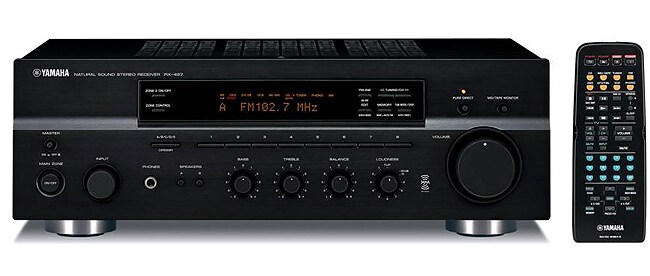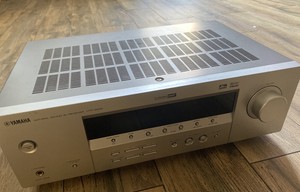


When the required number of turns of the coil has reached, the coil is taken off the cylinder and stretched a little so that the turns don’t touch each other.Ĭapacitors C3 (100nF) and C10 (100♟, 25V), together with R3 (1k), comprise a band-pass filter for very low frequencies, which is used to separate the low-frequency signal from the high-frequency signal in the receiver. It can be constructed on any cylindrical object, such as a pencil or pen, having a diameter of 4 mm. The self-supporting coil L has four turns of 22 SWG enamelled copper wire, with air core having a 4mm internal diameter. Its capacitance is to be determined experimentally.
#Yamaha receiver radio fm no sound full
If you are using some other capacitor that has a larger capacitance and are unable to receive the full FM bandwidth (88-108 MHz), try changing the value of VC. So, a 22pF trimmer is a good choice to be used as VC in the circuit. You should be able to change the capacitance of the variable capacitor from a couple of picofarads to about 20 pF. The information signal used in the transmitter to perform the modulation is extracted on resistor R1 and fed to the audio amplifier over a 220nF coupling capacitor (C1). That is, it has to be tuned between 88 and 108 MHz. The resonance frequency of this oscillator is set by trimmer VC to the frequency of the transmitting station that we wish to listen. Transistor BF495 (T2), together with a 10k resistor (R1), coil L, 22pF variable capacitor (VC), and internal capacitances of transistor BF494 (T1), comprises the Colpitts oscillator. Here’s a simple FM receiver with minimum components for local FM reception. An advantage of frequency modulation is that it has a larger signal-to-noise ratio and therefore rejects radio frequency interference better than an equal power amplitude modulation (AM) signal. It is also used in telemetry, radar, seismic prospecting, and monitoring newborns for seizures via EEG, two-way radio communication systems, music synthesis, magnetic tape-recording systems and some video-transmission systems. Frequency modulation is widely used for FM radio broadcasting. Of the radio waves, FM is the most popular one. To check the simple stereo amplifier circuit article: click here An antenna is used to catch the desired frequency waves. The receiver uses electronic filters to separate the desired signal from all the other signals picked up by the antenna, an electronic amplifier to increase the power of the signal for further processing, and finally recovers the desired information through demodulation. A radio or FM receiver is an electronic device that receives radio waves and converts the information carried by them to a usable form.


 0 kommentar(er)
0 kommentar(er)
